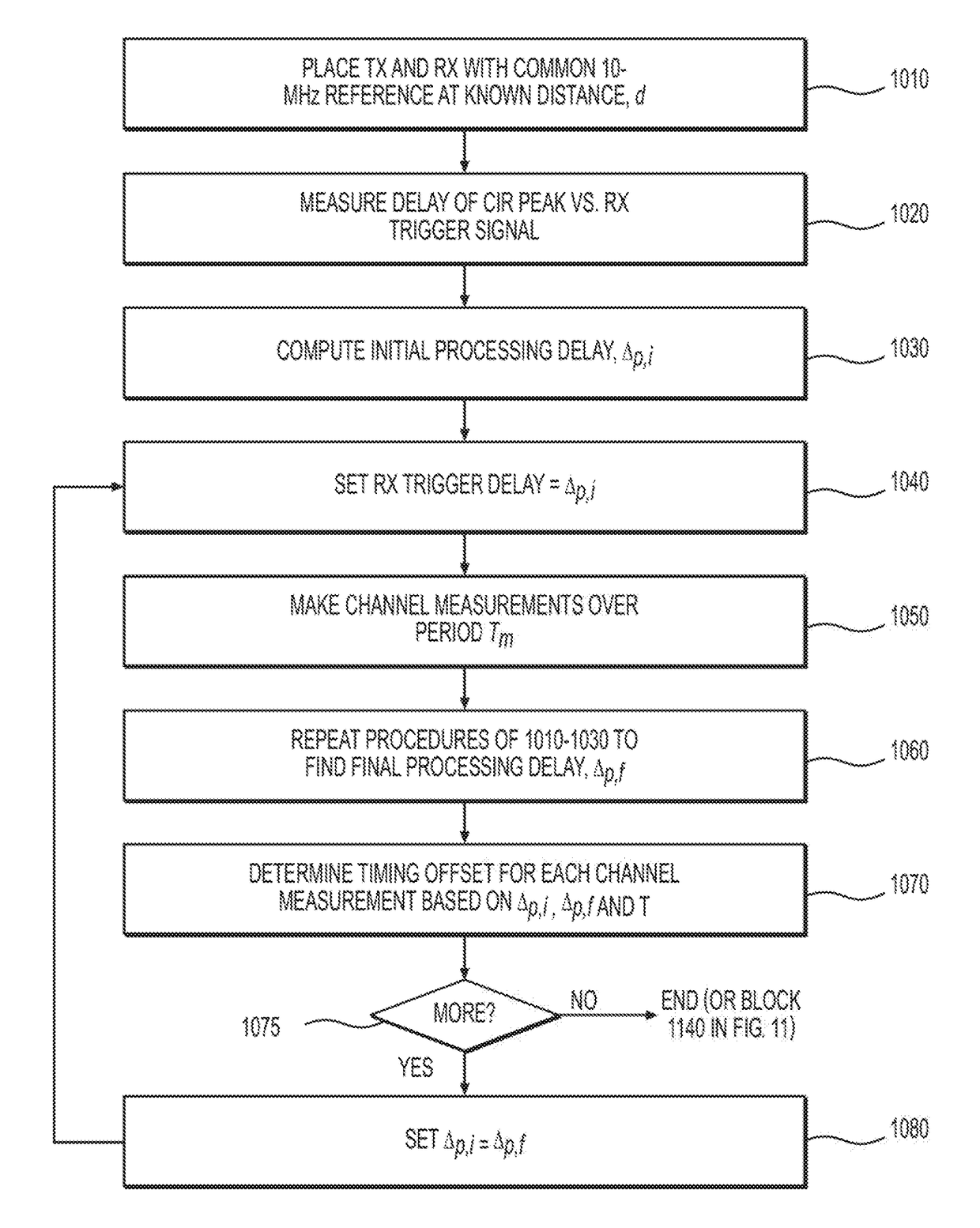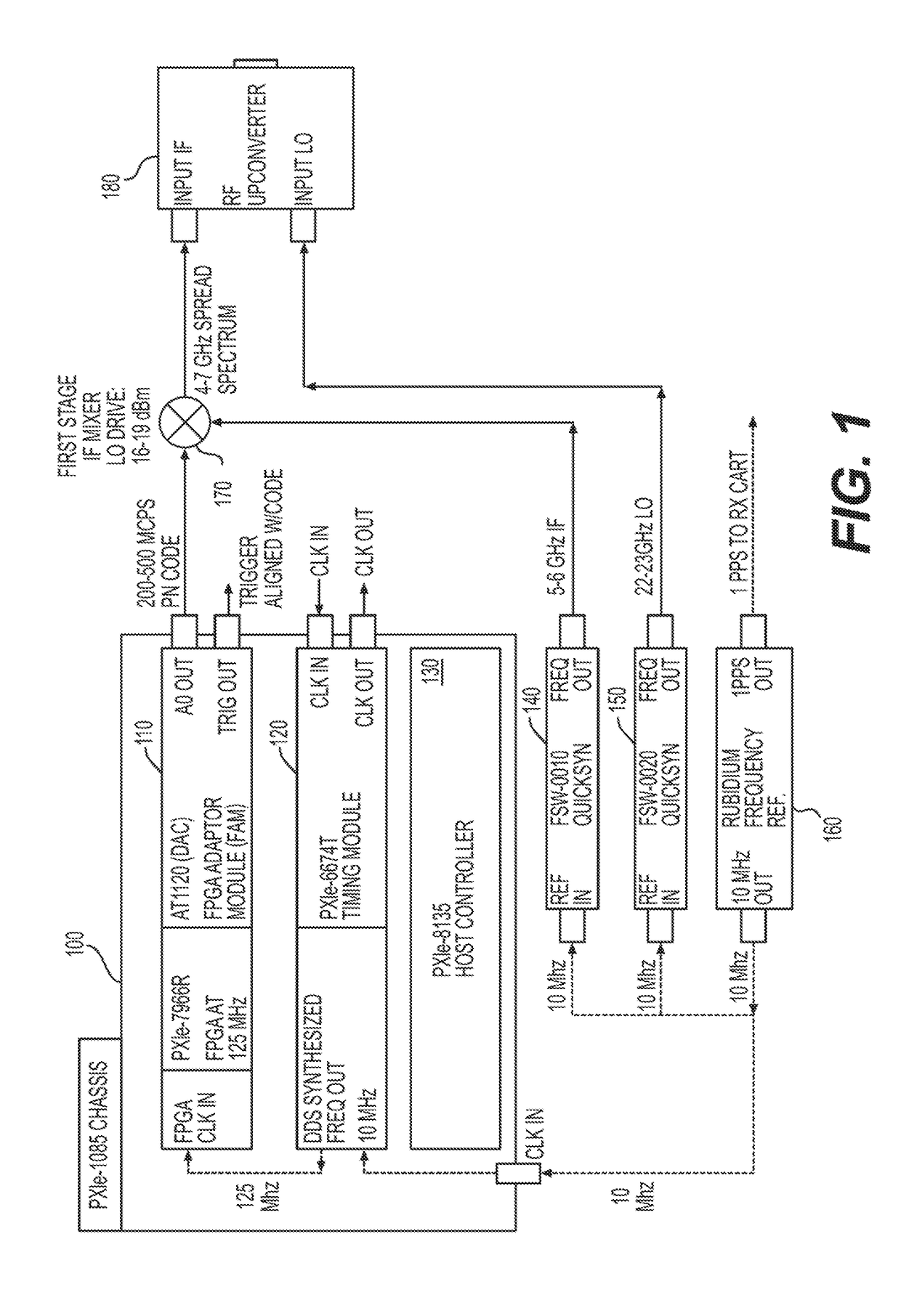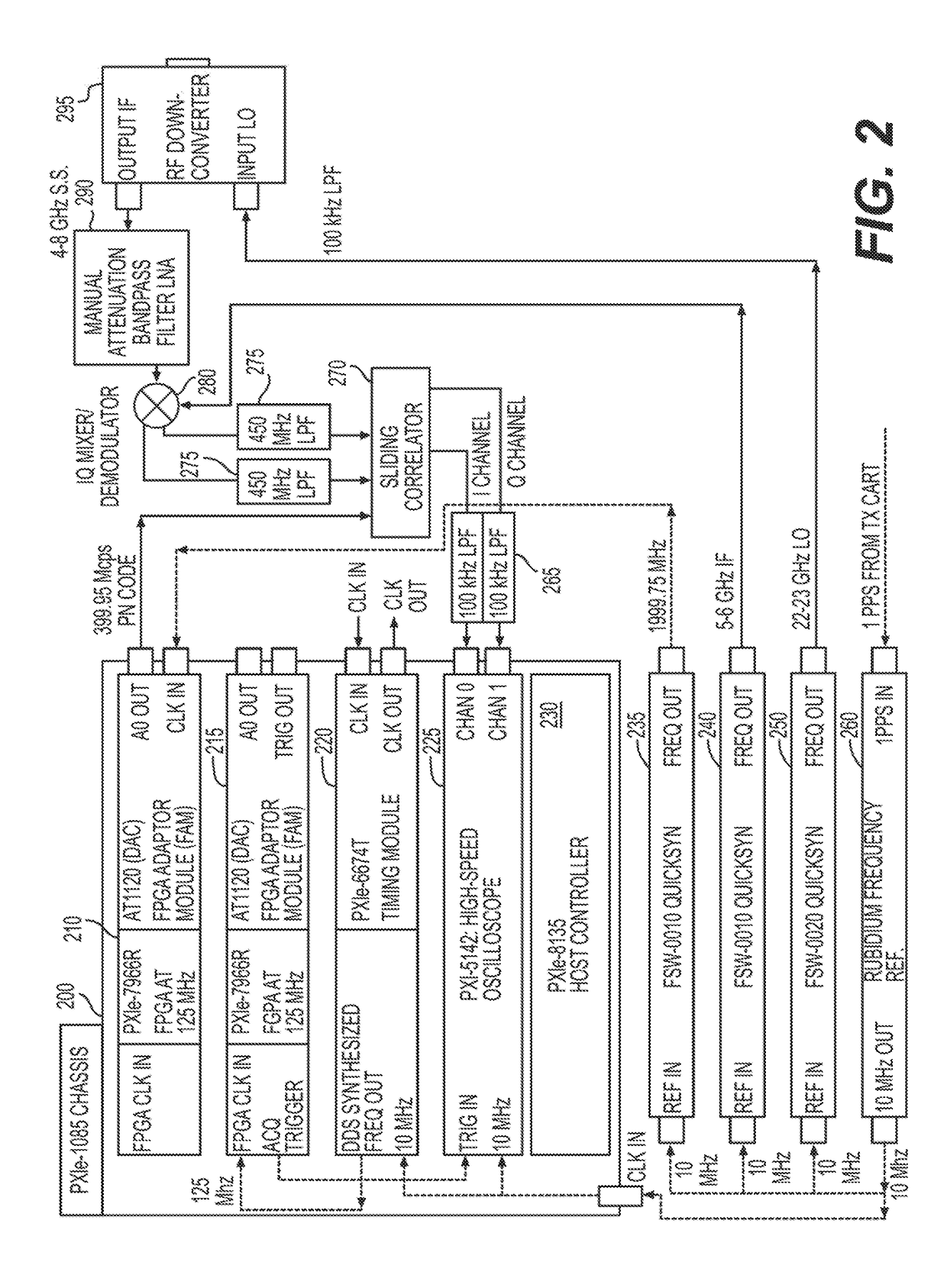Systems, methods, and computer-accessible media for measuring or modeling a wideband, millimeter-wave channel and methods and systems for calibrating same
- Summary
- Abstract
- Description
- Claims
- Application Information
AI Technical Summary
Benefits of technology
Problems solved by technology
Method used
Image
Examples
Embodiment Construction
[0014]Accordingly, to address at least some of such issues and / or problems, certain exemplary embodiments of methods, systems, devices, and computer-readable media of the present disclosure can utilize techniques to measure one or more parameters of wideband, millimeter-wave (mmW) channels and / or calibrate systems used to measure such channels. Such exemplary embodiments of methods, systems, devices, and computer-readable media of the present disclosure can vastly out-perform conventional methods, techniques and systems in various known applications, including exemplary applications discussed herein.
[0015]Some exemplary embodiments of the present disclosure comprise a system for measuring a parameter of a millimeter wave (mmW) channel, comprising: a receiver (RX) device configured to receive a first signal from the mmW channel, generate a second signal, and measure the channel parameter based on a comparison between the first and second signals; and a controller configured to determ...
PUM
 Login to View More
Login to View More Abstract
Description
Claims
Application Information
 Login to View More
Login to View More - R&D
- Intellectual Property
- Life Sciences
- Materials
- Tech Scout
- Unparalleled Data Quality
- Higher Quality Content
- 60% Fewer Hallucinations
Browse by: Latest US Patents, China's latest patents, Technical Efficacy Thesaurus, Application Domain, Technology Topic, Popular Technical Reports.
© 2025 PatSnap. All rights reserved.Legal|Privacy policy|Modern Slavery Act Transparency Statement|Sitemap|About US| Contact US: help@patsnap.com



